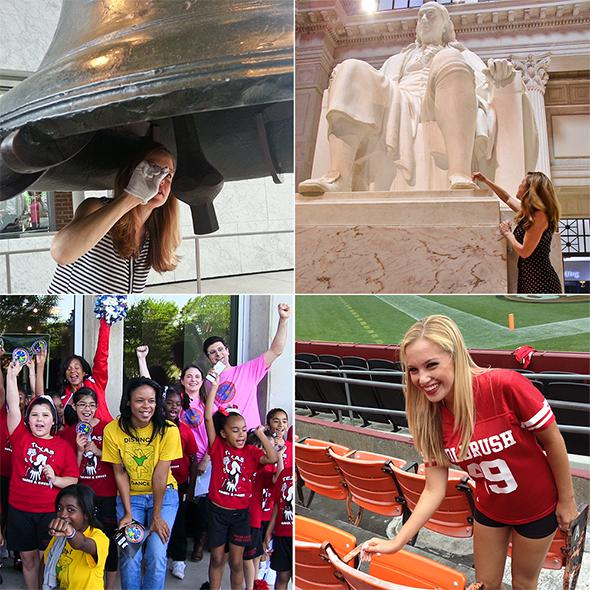When people ask what I’ve been up to recently, I tell them I’m taking microbes collected by professional cheerleaders and sending them into space.
It’s not as crazy as it sounds.
The name for all this is Project MERCCURI, a nationwide citizen science project looking at microbes on the International Space Station, comparing them to ones found on Earth, and asking how microbes collected on Earth will grow in space. The SpaceX Falcon 9 rocket carrying this project launches (fingers crossed) on Sunday.
People in our lab and others are interested in the microbes found in the built environment: our homes, offices, buildings, cars, sewer systems, etc. A particularly interesting case is the International Space Station, which is about as sealed off from the outside world as a built environment can be. We’d like to know what microbes are living there and how the microbial community differs from that in comparable environments on Earth. To ask this question, we’re sending a bunch of sterile swabs and a list of places for the astronauts to sample on the ISS. These swabs, along with thousands of pounds of other experiments, get dropped into the Pacific Ocean in early April. Once we receive the swabs, we will extract DNA and attempt to identify all the microbes.
A major goal of this project is to engage the public directly in the research. With the help of the Science Cheerleaders, our team also organized dozens of microbe-collecting events around the country.

Courtesy of Project MERCCURI
The Science Cheerleaders are a group of around 250 former and current NFL and NBA cheerleaders who have pursued careers in math, science, and engineering. They do a lot of outreach and promotion of science, and in their words like to “playfully challenge stereotypes” about women, science, and cheerleading all at once. When I describe this project to people, they assume that we (the microbiologists) brought cheerleaders on board to make the project sexy. But actually, they came up with the idea and brought us on board to make sure the science was sound.
At these collection events, we had participants take swab samples of their cellphones and shoes. All of these 4,000 microbial samples will be sequenced and identified using a DNA “barcode,” and the data will be entered into the Earth Microbiome Project. There we will be able to compare this data to previous work on cellphones and shoes as well as compare to the results from the ISS. Ultimately we’ll have an interactive visualization tool on our website where people can explore the data themselves. They’ll be able to ask questions ranging from “What sort of microbes did they find in Chicago?” to “How do microbes from football fans compare to microbes from basketball fans?”

Courtesy of Project MERCCURI
We also had people take swabs of surfaces such as railings, stairs, artificial turf, etc. Numerous samples came from schools and sporting events, including the NFL (Raiders, 49ers, Titans, Patriots, and the Washington NFL team), NBA (76ers, Kings, Magic, Spurs) and MLB (Giants, Phillies). We even received swabs from the Liberty Bell in Philadelphia, the set of the Today show, and “Sue,” the T. rex in the Field Museum of Natural History in Chicago. We also received a few bacteria found on various spacecraft, including the original Viking Mars Lander before launch in 1975.
From each collecting event, we chose the best-growing microbe as a candidate to fly into space—after weeding out any disease-causing microbes, which are a very tiny minority of all the microbes in the world. In total we have 48 candidates, each of which has its own “baseball card” on our website. These are the ones that are about to be launched to the ISS. A duplicate of this experiment will be performed on Earth, and we’ll be looking for differences between the two to see the effects of microgravity.
Is this a waste of taxpayer money? This is often a complicated and charged question, but one that I can luckily dodge by saying that this project is privately funded through Nanoracks LLC, Space Florida Inc., and the Alfred P. Sloan Foundation.
This project has proven to be an interesting mix of outreach and science. From an outreach perspective, we hope to engage people in thinking about (and doing!) science. The messages we’d most like to convey are that microbes are everywhere and that most of them are harmless or even beneficial. This is an exciting time in microbiology, with work on the human microbiome (the microbes in and on us) revealing new insights for human health. We hope to spark similar interest in the microbes around us.
